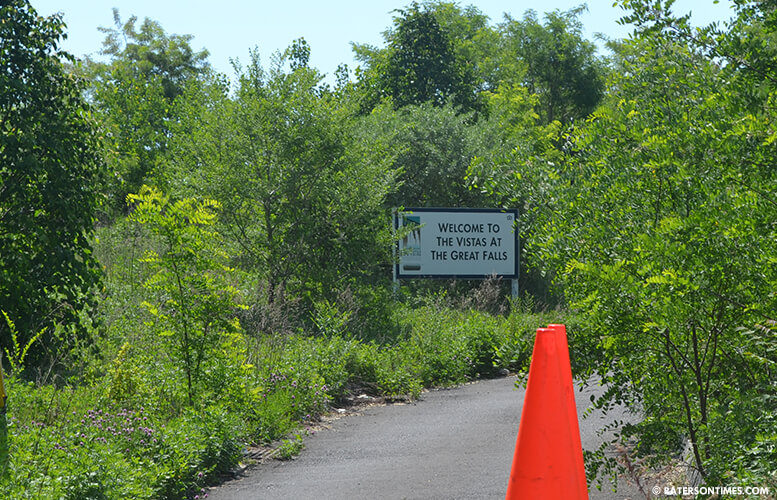The state has purchased the 8.5-acre site targeted for a controversial housing project late last year that critics said would mar the Great Falls National Historical Park for $5.7 million, announced Bob Martin, commissioner of the New Jersey Department of Environmental Protection (DEP), on Wednesday afternoon.
The state purchased the land which sits on a ridge 100 feet above the Passaic River providing a breathtaking view of the Great Falls Historic District below and the New York City skyline in the distance through the Green Acres Program to protect the viewshed and to support tourism to the city.
“Preserving this land is very important to enhancing the Paterson Great Falls Historical Park and preserving another aspect of the site’s important heritage,” Martin said. “The preservation of this beautiful landscape would not be possible if not for the shared vision of all the partners in this project and their commitment to preservation of this land. The Christie Administration remains committed to preserving historic sites that are important to people in the state and in cities like Paterson.”
Mayor Jose “Joey” Torres proposed creating a scenic viewing area and building a pathway from Jasper Street to Ryle Avenue at the site. He also proposed the building of a concession stand and comfort station. The paved area at the site will accommodate parking for visitors to the Great Falls.
“The site offers the possibility of creating a sequence of overlooks, landscapes, pathways and features that bring together the richness of a spectacular natural history and ecology; an aspect of our industrial and Native American heritage, and current day community and tourist interests, including recreation, interaction and events,” said Torres said. “We envision a design strategy that will work to amplify existing assets and will enhance the natural beauty of the site.”
The state purchased the land from the Paterson Renewal Associates, LLC. The developer intended to construct 13 buildings containing 156 housing units, but the project came under heavy criticism.
Activists argued the project would forever change the Great Falls area. “By preserving this property we’re keeping the ‘Great’ in the Great Falls National Park. What was once going to be an ugly housing development that cut a visual scar through the landscape will now stay preserved for people to enjoy. We opposed this project because it would have been in the middle of the Great Falls Historic District would have put a blight on the landscape and interfered with the use of the park,” Jeff Tittel, director of the New Jersey Sierra Club, said.
The developer, Lakewood-based Greentree Development Group, dropped the project and proposed the state buy the land.
The land is partially within the Great Falls National Historic District, according to the state.
“We’re very pleased that this parcel is going to be preserved as open space,” said Kate Marcopul, administrator of the New Jersey Historic Preservation Office (SHPO). “This action will preserve the integrity of the setting and the character of Paterson’s nationally significant historic sites, so that current and future generations of New Jerseyans can better understand its importance to our history.”
The Great Falls area has a deep history going back to the beginning of the United States. In 1778, Alexander Hamilton was so taken by the water falls’ potential for industry he selected the area for the nation’s first industrial city.
In 1791, Hamilton became the first secretary of treasury. He helped found the Society for the Establishment of Useful Manufactures (S.U.M.), a state-chartered private corporation, to secure America’s economic independence from Great Britain. Paterson, named after New Jersey governor William Paterson, a signer of the U.S. Constitution, was founded by the SUM the same year.
Paterson later became an associate justice on the United States Supreme Court.
“Preserving this property is a win for New Jersey for both ecological and historic reasons,” Rich Boornazian, assistant commissioner of Natural and Historic Resources. “New Jerseyans and visitors to our state will now have additional space to see this geologic marvel and to further learn how it inspired leaders to build Paterson and a new industrial foundation for a young nation.”
